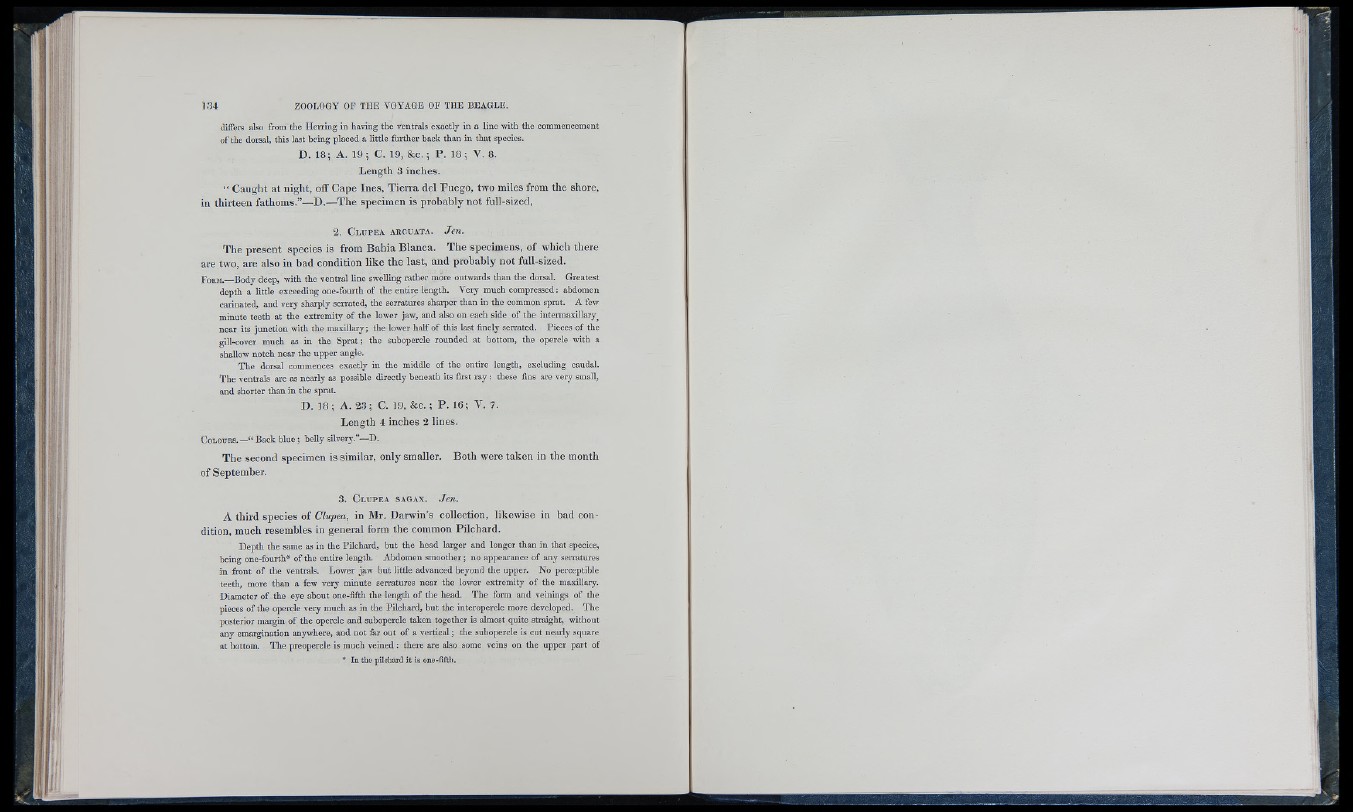
differs also from the H erring in having the ventrals exactly in a line with the commencement
of the dorsal, this last being placed a little further back than in that species.
D. 18; A. 19; C. 19, &c. ; P . 18 ; V. 8.
Length 3 inches.
“ Caught at night, off Cape Ines, Tierra del Fuego, two miles from the shore,
in thirteen fathoms.”—D .—The specimen is probably not full-sized,
2 . C l u p e a a r c u a t a . Jen.
The present species is from Bahia Blanca. The specimens, of which there
are two, are also in bad condition like the last, and probably not full-sized.
F orm.—Body deep, with the ventral line swelling rather more outwards than the dorsal. G reatest
depth a little exceeding one-fourth o f the entire length. V ery much compressed: abdomen
carinated, and very sharply serrated, the serratures sharper than in tbe common sprat. A few
m inute teeth at the extrem ity of the lower jaw, and also on each side of the intermaxillary^
near its junction with the m axillary; the lower half of this last finely serrated. Pieces o f the
gill-cover much as in the S p rat; the subopercle rounded at bottom, the opercle with a
shallow notch near the upper angle.
T he dorsal commences exactly in the middle of the entire length, excluding caudal.
T he ventrals are as nearly as possible directly beneath its first ray : these fins are very small,
and shorter than in the sprat.
D. 18 ; A. 23; C. 19, &c. ; P . 16; V. 7.
Length 4 inches 2 lines.
C olours.—“ Back b lu e; belly silvery.”- D .
The second specimen is similar, only smaller. Both were taken in the month
of September.
3 . C l u p e a s a g a x . Jen.
A third species of Clupea, in Mr. Darwin’s collection, likewise in bad condition,
much resembles in general form the common Pilchard.
D epth the same as in the Pilchard, but the head larger and longer than in that species,
being one-fourth* of the entire length. Abdomen sm oother; no appearance of any serratures
in front of the ventrals. Low er jaw but little advanced beyond the upper. N o perceptible
teeth, more than a few very minute serratures near the lower extrem ity of the maxillary.
Diam eter of the eye about one-fifth the length of the head. T he form and veinings of the
pieces of the opercle very much as in the Pilchard, but the interoperele more developed. The
posterior margin of the opercle and subopercle taken together is almost quite straight, without
any emargination anywhere, and not far out of a vertical; the subopercle is cut nearly square
at bottom. T he preopercle is much veined : there are also some veins on the upper part of
* In tbe pilchard it is onc-fifth.